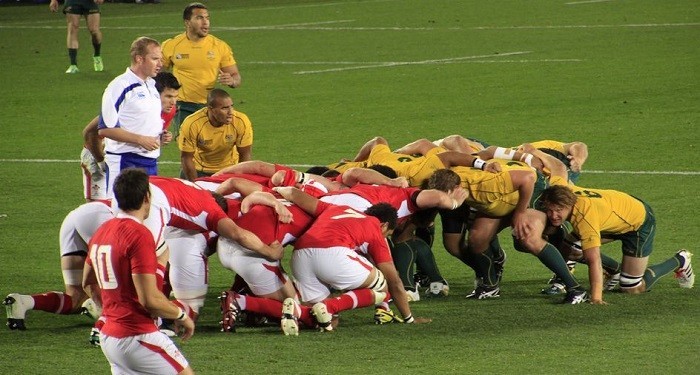
Providers, Patients & Equipment
Unlike American rules medicine in which health care practitioners are widely outnumbered, there must be a 1:1 ratio of health care practitioners to patients. In its most classic form, it is 18 health care practitioners versus 18 patients on the field of play. It is not uncommon to see 500 health care practitioners versus 500 patients, as long as the 1:1 ratio is preserved.
Though Australian rules medicine is full contact, equipment is minimal. Gowns, masks, scrubs, and white coats are optional. Pagers, phones, stethoscopes, and other medical equipment are also optional. Most health care practitioners and patients wear mouth guards and cleats. The only balls on the field are your own.
Field
The field of play is a hospital, whose boundaries are defined by its floors, walls, and ceilings. There are two goal squares: one is called the exit and the other is called hospice. The most prominent line on the field is the one that leads to the cafeteria.
Positions
Patients are found either in beds unmotivated or outside smoking, while health care practitioners are on the front line, also known as trenches. From the stands, patients are identified by their exposed rears and intravenous poles. Health care practitioners are identified by their overwhelming fatigue and general lack of interest. From the sidelines, patients are coached by family and friends with questionable incentives, while health care practitioners are not coached but manipulated and puppeteered by administrators and insurance companies.
Play & Scoring
The team with the highest score at the end of the workday wins. Health care practitioners score a point for every patient discharged from the hospital, independent of destination (home, rehab, intensive care unit, hospice, or heaven). Patients score a point for every additional night they stay hospitalized and thwart discharge. Tactics used in the quest to score points include rounding and consulting (employed by health care practitioners) and kicking and screaming (used by patients). Unlike American rules medicine, health care practitioners and patients are allowed to tackle one another in order to impede each other’s progress. Since there is no primary ball handler, anyone can be tackled at any time anywhere. Health care practitioners and patients can also punch, choke, curse out, and sue one another. In Australian rules medicine, anything goes and a team can win, lose, or tie. In American rules medicine, everybody loses. Everybody.
Length of Workday
The workday is comprised of four twenty-minute quarters with a twenty-minute halftime between the second and third quarters. This is unlike American rules medicine where the workday ranges anywhere between 24 hours and forever. (It should be noted that interns and residents in American rules medicine are allowed to have unlimited naps in the field of play.)
Officiating
Field and boundary umpires are on the field of play, independent and unbiased, ensuring the laws of Australian rules medicine are upheld. This differs from American rules medicine in which there is no true independent officiating body. In American rules medicine, patients have the support of patient advocates, patient satisfaction surveys, administrators, insurers, and lawyers; while health care practitioners are supported by… well, no one.
For additional reading, please look out for Dr. 99’s upcoming book entitled “Downundercare: A Mate’s Guide to Australian Rules Medicine.”